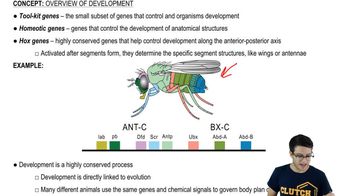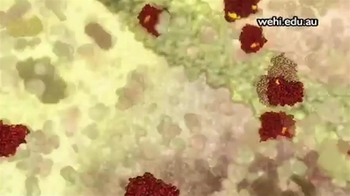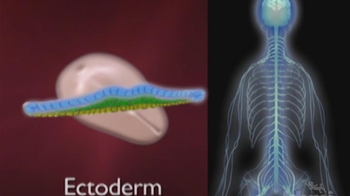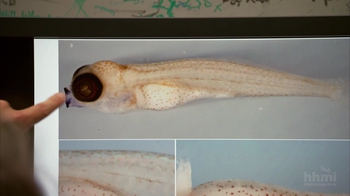20. Development
Developmental Biology
Learn with other creators
Practice this topic
- Multiple ChoiceCytoplasmic determinants __________.2209views
- Multiple ChoiceCells can influence each other's development by a process known as __________.1012views
- Multiple ChoiceInstead of developing a head and a tail, an abnormal Drosophila embryo develops two tails. This is most likely due to __________.1215views
- Multiple ChoiceCell differentiation is first observable when __________.1481views
- Textbook Question
What is apoptosis?
a. An experimental technique used to kill specific cells
b. Programmed cell death that is required for normal development
c. A pathological condition observed only in damaged or diseased organisms
d. A developmental mechanism unique to the roundworm C. elegans
1337views - Textbook Question
Which of the following occurs when a covalent bond forms?
a. Electrons in valence shells are transferred from one atom to another.
b. Electrons in valence shells are shared between atoms.
c. Partial charges on polar molecules interact.
d. Nonpolar molecules are pushed together.by surrounding water molecules.
1819views - Textbook Question
In adult animals, ___________ are a source of undifferentiated cells that can divide to produce cells that can specialize.
570views - Textbook Question
What does it mean to say that a characteristic is heritable?
a. The characteristic evolves.
b. The characteristic can be passed on to offspring.
c. The characteristic is advantageous to the organism.
d. The characteristic does not vary in the population.
868views




























![Drosophila Embryogenesis - Anterior/Posterior Patterning [English Captions]](https://img.youtube.com/vi/ZOzKXrOGtgw/mqdefault.jpg)



















